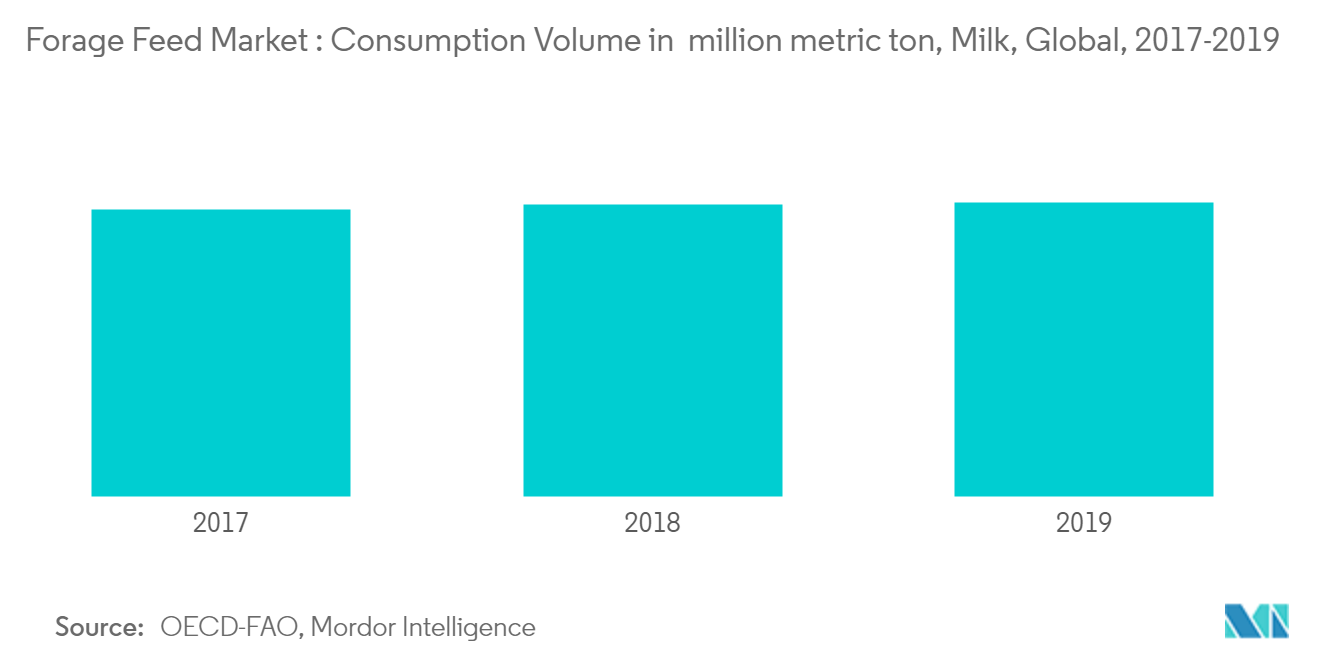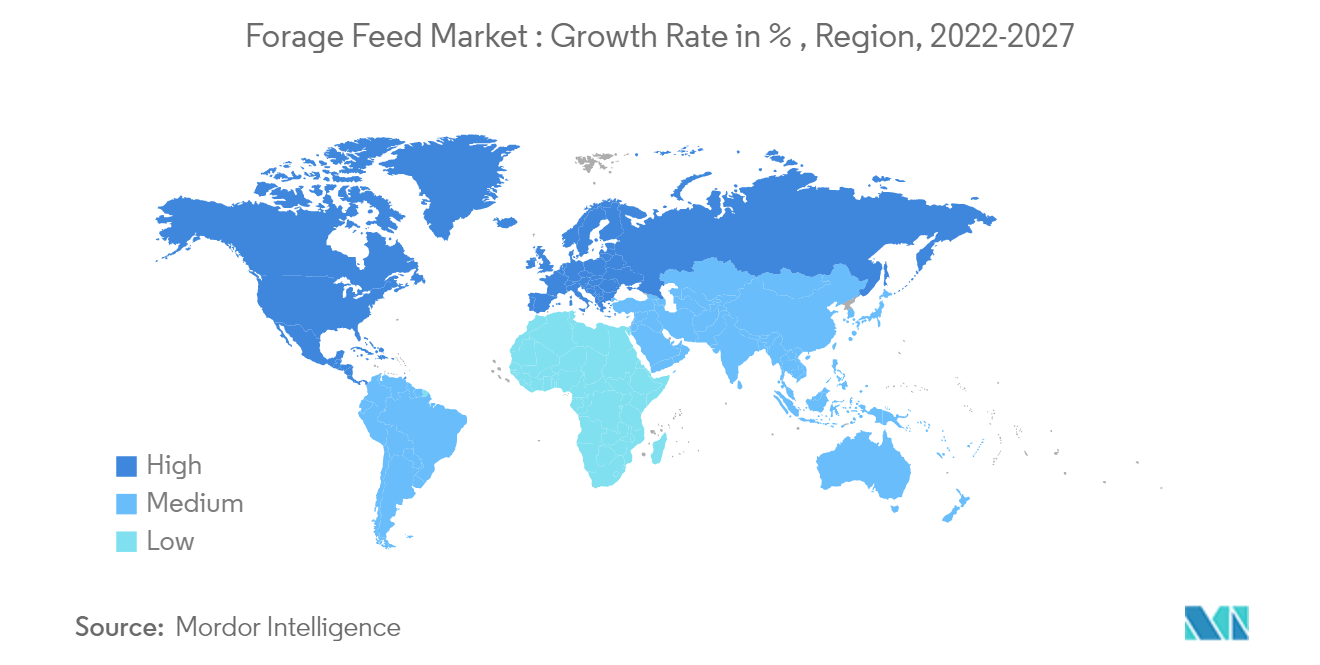Market Trends of Forage Feed Industry
This section covers the major market trends shaping the Forage Feed Market according to our research experts:
Rising Demand for Milk and Other Dairy Products
The consumption of animal products, such as milk and meat, is increasing across the world, which is attributed to the increasing awareness of the health benefits of milk and the higher demand for protein. The high demand for quality products is increasing the demand for quality feed, which, in turn, is driving the market for forage crops, as farmers are choosing good-quality forage for cattle to produce high-quality animal products. There has been an increasing demand for milk around the world, and to meet the increasing demand for milk, the cattle population is increasing, which, in turn, is driving the market for forage feed.
According to a data source by USDA, the consumption of milk increased from 179,757 thousand metric ton in 2016 to 187,615 thousand metric ton in 2019 across the world, which led to increased demand for animals for milk and meat production. These herbivorous animals are highly dependent on forage crops. Thus, to meet the growing needs of dairy, farmers are resorting to forage feed to keep these animals healthy, so that nutritious and good quality animal products can be provided to the consumers.
Cattles provided with nutritional forage will boost milk production. Forages act as the base ingredient in dairy cattle which provide cattle fiber and roughage. The quality of forage helps in increasing animal production and health. Ruminants such as cows are fed with forages-silages- and hay with high feed value, which enhances nutritional needs in the diet. In turn, the nutritional diet will enhance the quality of milk in ruminants, thus, driving the forage feed market during the forecast period. Increasing consumption of milk in developing countries is one of the major drivers that will gear up the forage feed market during the forecast period.

North America is the Largest Forage Feed Market
Oregon, the United States' primary forage grass-producing state, produces more grass and legume seed than the rest of the world. In Europe, the area under forage seed cultivation is constantly increasing due to a rise in demand. The commonly grown Canadian forage grasses, Timothy and bromegrass, are the most widely produced grass seeds on a global scale.
Also, there is a surge in the livestock population due to the increased demand for beef and chicken in the region. Furthermore, due to the export destinations in Canada for Asian countries, the market is expected to grow. Also, to meet the growing demand for dairy farms and racecourses in Mexico, the forage market is projected to grow in the country. Thus, these factors drive the North American region, and the market here is anticipated to grow during the forecast period.
Due to its crude protein content, the use of alfalfa hay is considered beneficial, particularly for poultry feed, followed by animal feed. Cattle production is the most important agricultural industry in the United States. Further, the beef demand in the United States is expected to increase by an estimated 8.9% in 2019, as per the USDA. The increased demand for beef is expected to fuel the demand for hay silage in the country.

